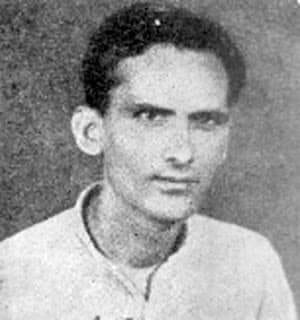Sheen Muzaffarpuri, real name Wali-ur-Rahman, name de plume ‘Shaida’ was a prominent fiction writer, who was born in 1920 in a village Baath Asli, a small hamlet in Nanpur subdivision Sitamarhi in the then district of Muzaffarpur in north Bihar. He experimented with a host of literary genres. He published about 10 collections of short stories. His first collection of short stories, “Awarah Gard Ke Khutut” (Letters of a Vagabond) was published in 1946, in which we can find resonance and echoes of the great Urdu fictionist Saadat Hasan Manto. The second edition of this collection was published under the title “Band Kamray” (Closed Rooms). Besides, Sheen Muzaffarpuri also published three novels “Hazaar Raatein” (Thousand Nights) 1955, Khota Sikka (Fake Coin)1961 and Garm Raakh (Hot Ashes), which remained incomplete; and two novelettes namely, Farhat (Joy) 1949 and “Teen Larkiyan Ek Kahaani” (Three Girls, A Story) 1959. When he embarked on his journey of creative writing, it was a movement of the Progressive Writers Movement, which influenced him. However, he never got associated with him formally. His stories deal with social inequalities, class conflicts, devastations of capitalism and feudal exploitations and marginalization of the marginalized ones. He also addressed the issues of criminality, corrupt and inefficient policing and flawed-exploitative judicial system. His story ‘Kya Jeena Kya Marna’ (What to live and die for) 1981 is precisely treating this issue with Sarju Ustad being the criminal character of the story, who garners enough social support despite having committed the horrible crime of killing Hatim Miyan, and after a judicial trial, because of the social support the criminal, comes out unpunished. Sheen Muzaffarpuri himself belonged to a family of lower/poor peasantry. This background of his is reflected in his stories with simple and candid language, symbols, similes, metaphors, and imageries. He edited many journals/periodicals in Calcutta, Patna, and Delhi. The Partition of 1947 left strong impact on him that led him to narrate his tales in his memoir ‘Raqs-e-Bismil’ (Dance of the Wounded) 1995. As he was also the editor of ‘Zaban-o-Adab’, the literary monthly of Bihar Urdu Academy, Nov-Dec 1996 issue of the journal devoted a special section on him in his commemoration.







Leave a Reply